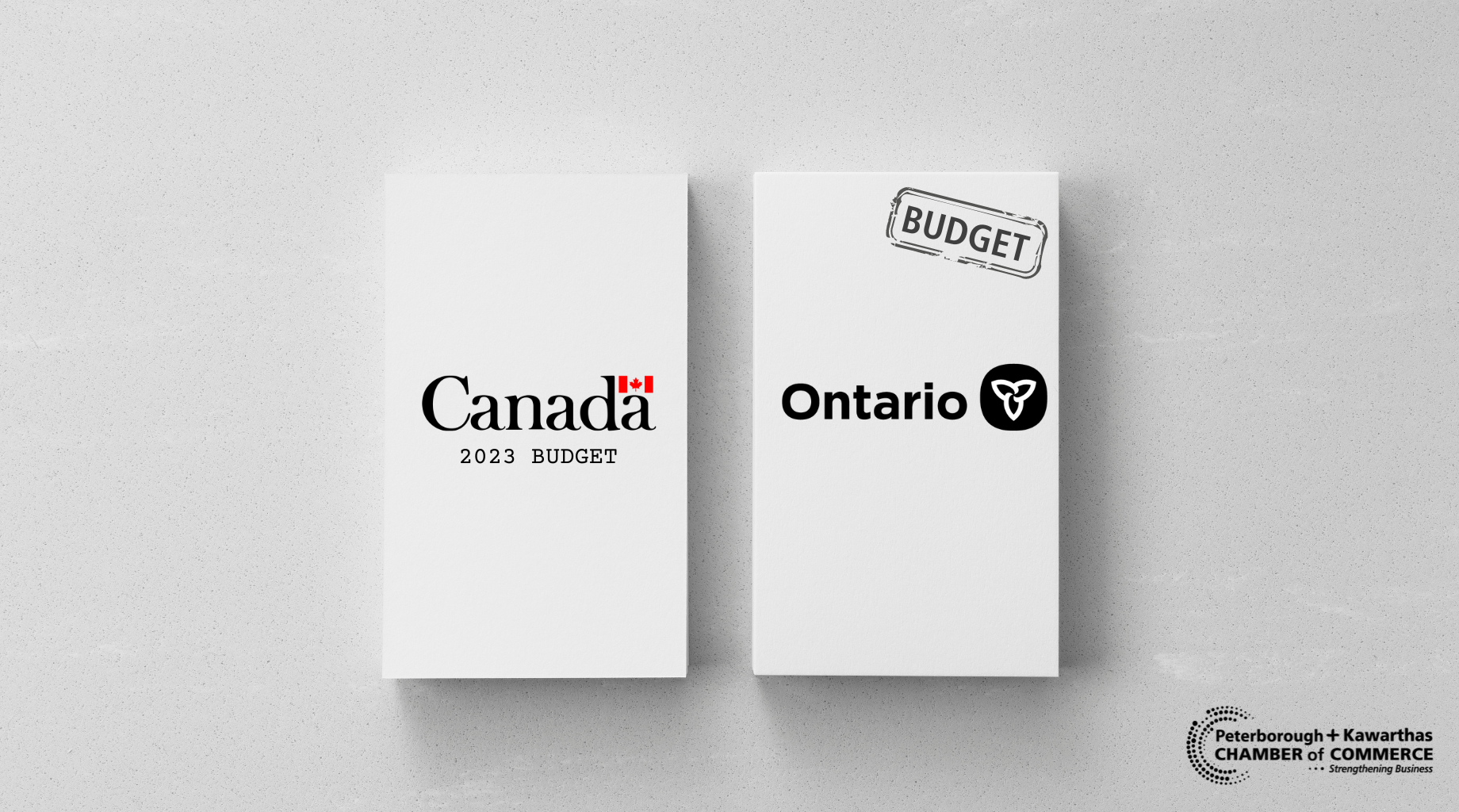Voice of Business: A Tale of Two Budgets
/Both the federal and provincial governments have recently released their budgets and they could hardly be more different.
Ontario’s budget came in $10.7 billion under its initial projected deficit with projections of a balanced budget next year. Its debt to GDP ratio shrank. Driving this is higher revenue from inflation.
It’s in stark contrast to the federal budget where the deficit for this year is expected to increase by $6.6 billion. The plan to balance the budget by 2027-28 is gone, with no current projections or strategy for balancing the books. Our national debt to GDP ratio is increasing this year but is expected to decline later.
In the fiscal philosophy of spending when times are bad and saving when times are good, we’re getting some mixed messages regarding what times we’re in.
The Ontario Chamber of Commerce (OCC) has its analysis of the budgets. The highlights for Ontario include:
Further steps to address labour market challenges by boosting immigration through the Ontario Immigrant Nominee Program and removing barriers to foreign credential recognition through the Ontario Bridge Training Program.
Creation of additional pathways into health care jobs through the expansion of the dual credit program which will provide secondary students with opportunities to start their careers as nurses, personal support workers, medical laboratory technicians and paramedics sooner.
Introduction of the Ontario made Manufacturing Investment Tax Credit to support local manufacturing companies in investing and expanding in Ontario, strengthening provincial supply chains.
Investments in mental health through an additional $425 million over three years for mental health and addictions, including a five per cent increase in the base funding of community‐based mental health and addiction service providers funded by the Ministry of Health.
It comes up short in investing further in the healthcare system, supporting small businesses through scaling digitization funding and improving access to capital, climate adaption and mitigation strategies, removing interprovincial barriers to trade and labour mobility, and investing further in our supply chain.
For the federal budget, the OCC’s analysis pulls out a few highlights:
Incentivizing investments in the green economy, with new refundable tax credits for clean electricity, carbon capture, and equipment to manufacture and process clean technologies and critical minerals; an expansion of the reduced corporate income tax rates for zero-emission technologies; and funding through the Canada Infrastructure Bank for major clean infrastructure projects.
Advancing economic reconciliation by developing an Economic Reconciliation Framework, supporting Indigenous equity ownership of infrastructure projects, co-developing a First Nations-led National Land Registry to help realize economic benefits of First Nations lands, and implementing a co-developed Urban, Rural, and Northern Indigenous Housing Strategy.
Mitigating supply chain challenges by introducing measures to support a National Supply Chain Strategy and developing transportation supply chain data that will help reduce congestion, improve efficiency, and inform future infrastructure planning.
Supporting a resilient health care system through the New Canadian Dental Care Plan, funding for a renewed Canadian Drugs and Substances Strategy to help address the opioid overdose crisis, and an ongoing focus on data collection.





